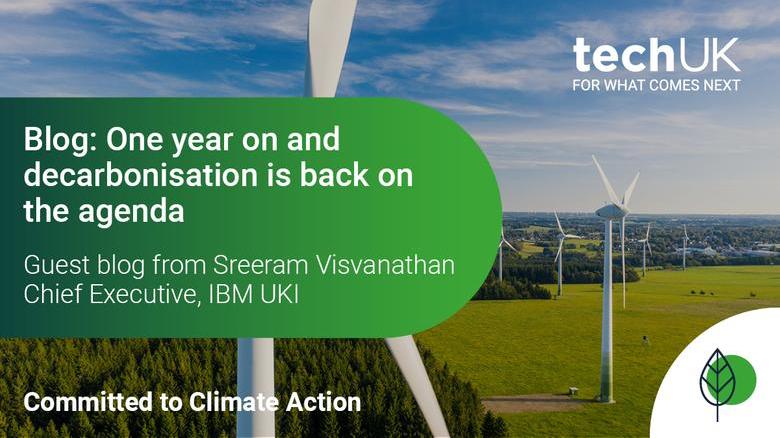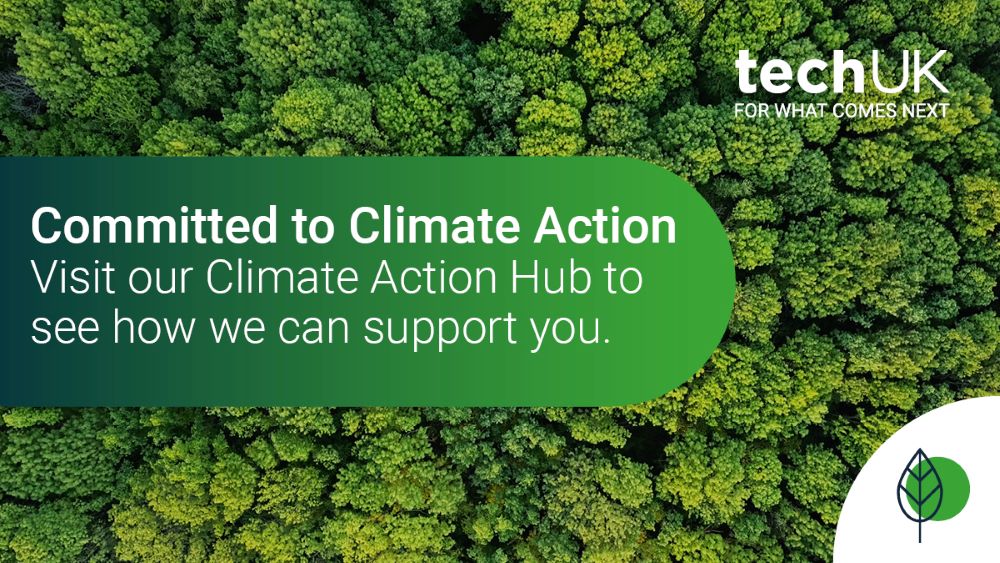One year on and decarbonisation is back on the agenda (Guest blog by IBM)

This week, IBM is in Egypt as a proud technology partner for this year’s historic COP27 conference. This collaboration with the Presidency of Egypt builds on our history of environmental commitments and alliances since 1971. I am proud to say as an organisation that we have achieved meaningful results across the last five decades with IBM disclosing its environmental performance since 1990, disclosing CO2 emissions in 1995, and having sustained a goal to reduce CO2 emissions since 2000. Last year, we saw discussions around decarbonisation and clean energy at the top of the agenda with goals set for reductions by 2030. This year we will no doubt see countries providing further updates to this target as we inch ever closer.
How decarbonisation is top of the agenda
As companies across multiple industries push towards net zero, one thing I know for certain is that to reach their targets, new utilities partnerships, ecosystems and marketplaces will be essential. Utility companies can support practical enterprise sustainability by increasing the amount of clean, renewable energy in the grid, enabling rapid and cost-effective electrification of industries, and moving from managing the grid to orchestrating all its complex inputs. In the coming years, utilities will continue to play a central role in the energy transition by accelerating global decarbonisation through clean electrification – the process of replacing fossil fuels with electricity produced from renewable sources, like wind, solar and hydro.
How clean electrification is accelerating it
The good news is that 73% of today’s global emissions could be eradicated by the clean electrification of transport, and heating in buildings and industry.[1] High-emitting sectors, like power generation and transportation, are investing heavily in in the process. Global automotive producers are planning to spend more than half a trillion dollars on electric vehicles and batteries through 2030.[2] And despite the persistent pandemic-induced supply chain challenges and construction delays, 2021 was a record breaking year for growth in renewable capacity, up 6%.[3] It is encouraging that low-emissions sources of electricity, led by renewables, are poised to overtake fossil fuels by 2030, ending decades of growth for coal.[4]
But, enabling clean electrification at scale for consumers and businesses will require leaders to come together in new ways to rethink how electrical systems operate. As more parts of our global economy rely on electricity to run, electricity ecosystems will become more complex and diversified. The number and scale of non-utility owned-and-operated resources connected to the grid will increase exponentially. And more interconnected functions will generate increasingly complex information flows.
Why strategy is the next step
To push ahead, digital transformation will be key to decarbonisation and helping electricity ecosystems deliver clean energy to connected consumers in safe and reliable ways. Digital solutions that apply technologies such as AI, IoT and blockchain will support new energy marketplaces, while enabling more resilient physical infrastructure, more efficient and reliable utility operations, and better customer service. Some of the examples below showcase the impact of delivering.
Utility asset management solutions can help keep critical assets running at optimal efficiency, improve equipment operations, provide a complete view of asset health, mitigate the high cost of vegetation management, enhance outage predication, and optimize asset inventory.
Advanced metering infrastructure (AMI) solutions can help utilities adapt to changing customer demand, including wide-spread distributed energy and increased adoption of electric vehicles. The next generation of utility networks include AMI powered by Edge computing over 5G networks with scalable, elastic IoT cloud capabilities. This enables advanced streaming analytics to digest and process usage data and millions of messages to assess grid conditions in real time. These advances in data analytics, AI and communications help accelerate grid modernization to create new areas of value for utility operations and transform the customer experience.
Utility customer management solutions can enable a digital-first approach to customer service by providing omnichannel touch points with AI-powered virtual assistants (chatbots) and analytics-driven processes, so customer service representatives can focus on higher-value interactions.
Fuelling the future
We already see a great example of how a utility company is partnering with us to fuel success.
Wind and solar energy will rise from 28% last year to about 50% by 2030 and 80% by 2050[5], making renewable energy forecasts increasingly critical. Fully committed to sustainability, Brazil’s renewable energy leaders, Omega Energia, and IBM collaborated to build a cost-effective, scalable, cloud-based wind forecasting platform. High-accuracy forecasts using best-in-class weather data and advanced analytics, including AI and machine learning, are powering benefits in maintenance planning, generation forecasting, and strategic planning to help Omega meet growing demand and deliver service reliably –today, next month and for years to come.
Looking forward
Driving toward successful sustainability goals is without a doubt a major business imperative. As well as the current social economic impact, climate change, dwindling natural resources, and other hazards are disrupting business in unexpected ways, this is compelling businesses to transform the way they operate and COP27 is only putting this back on our agenda. As global citizens, we need to understand that technology can play an important role in helping our governments, companies, and organisations meet climate goals. Over the next few weeks, we will be showcasing what is achievable with our partners in addressing key issues that affect us all by utilising creative and innovative solutions that push the climate agenda forward.
[1] https://www3.weforum.org/docs/WEF_Increasing_Clean_Electrification_by_Empowering_Demand_2021.pdf
techUK – Committed to Climate Action
By 2030, digital technology can cut global emissions by 15%. Cloud computing, 5G, AI and IoT have the potential to support dramatic reductions in carbon emissions in sectors such as transport, agriculture, and manufacturing. techUK is working to foster the right policy framework and leadership so we can all play our part. For more information on how techUK can support you, please visit our Climate Action Hub and click ‘contact us’.



